In 2020, when I was 17, I posted a video essay on YouTube called “Why Am I Obsessed With Skinny White Women?” I had spent the previous year in Hong Kong, where all my classmates were also Asian and for the first time in my life, I was called pretty in a way that didn’t feel disingenuous. When I returned to New York and my very white prep school, I started a project interviewing Asian American artists and writers, because I missed seeing my face reflected on Subway ads and TV shows.
Simultaneously, I was struggling with an attachment to another group—of modelesque, blonde, white celebrities—that had turned into a form of almost-worship. They were pop stars, fictional socialites, and professional athletes, but I didn’t see them as human. Their existence was aspirational, godly. These women were the subjects of my YouTube video.
Watching it now makes me sad. Any insight I uncovered about race, identity and parasocial relationships was clouded by self-hatred. I saw my Asianness as hindering me from ascending to the ranks of my white role models.
Three years into college, I’ve healed a lot of these feelings of inadequacy and internalized prejudice through friendship, education, and growing up. But sometimes I worry self-acceptance has morphed into willful ignorance. Yale is still a predominantly white institution, where it is very possible to fall into the rhythm of not talking about race and forgetting that it exists. Relationships with white people can feel easy and simple—deceptively so.
When I started my Substack, admittedly, race was not the first thing on my mind. I wanted to establish a routine of weekly writing for my friends to read and contribute to. Then strangers started subscribing, which I found strange and flattering. People were interested in reading about my life without any prior investment in me as a person.
What I didn’t know then was that these diaristic, voicey Substacks were multiplying by the dozen. The topics they cover overlap more than you’d expect from a random sample set. Writers on the platform
and describe this algorithmically-favored content centered around fashion, media, culture, and people’s personal lives as “lowest common denominator. Everyone is journaling, whisking matcha, doing pilates, going to therapy, drinking less alcohol, working from home, scrutinizing their faces, contemplating Ozempic, reading The Cut, digging through The Real Real, and moving to New York.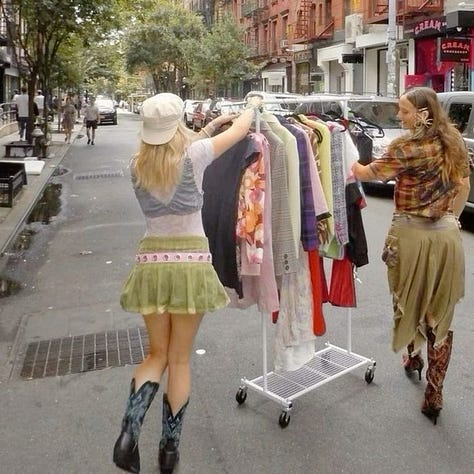
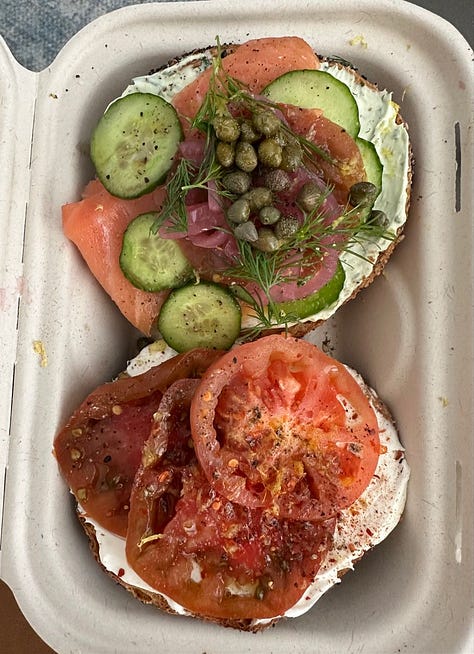
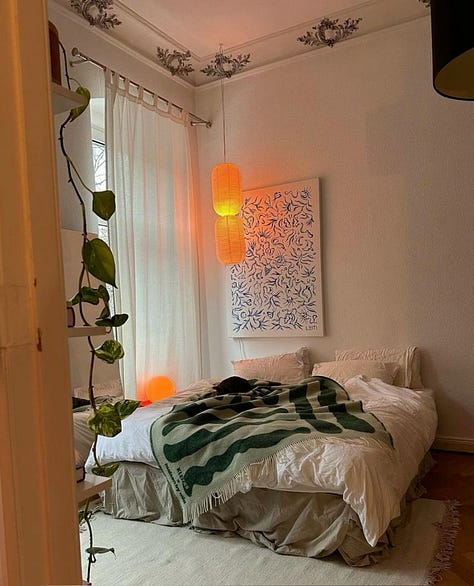
Travelers romanticize summer vacations along European coasts and cobblestone streets. Fashion inspiration comes in the form of thin, white bodies posed on the sidewalk, or mirror selfies in minimalist, Scandinavian-inspired apartments. The food bloggers eat thick red burgers from Red Hook Tavern and open-faced sourdough bagels from Apollo. The bookworms read Sally Rooney, Miranda July, and Joan Didion. The essayists ponder girlhood, overconsumption, and brat summer.
For all of the essays circulating about how all content feels the same right now, I’m surprised that few-to-none mention race. Maybe Substack feels monotonous because the most visible content is overwhelmingly white, female, upper-middle class, and millennial? I asked fashion creator
for her thoughts:“There’s a number of safe, apolitical topics that get a lot of likes, which leads to echo-chambering. Whether or not the writer is a white woman, I think it creates a homogenous voice associated with white woman interests.”
The voice of the white woman is satisfying, conversational, relatable. We love it enough to believe there is monetary value attached to it—as
says:“Society conditions a very certain type of person to believe that they can/should write their thoughts out and that it deserves to be paid for. And then there's everyone else.”
In 2008, ultra-confessional, sensational essays by female authors were all over the internet. Titles ranged from My Gynecologist Found a Ball of Cat Hair in My Vagina to My Former Friend’s Death Was a Blessing. These pieces were outrageous, revealing, and controversial. They were great traffic bait, commodifying women’s experiences for clicks.
In 2017, Jia Tolentino declared this personal essay boom over. Women stopped being willing to disclose the intimate details these essays required, and the genre disappeared. Only 7 years later, personal writing is back in full force, but with less scandal and more lighthearted listicles.
wrote in her inaugural post that the internet has the power to wipe away the burden of identity—you can escape otherness, trauma, heaviness, intensity—and render yourself new.“After white men, only white women and girls are afforded an unstudied ease, a universalizing, pedestalizing canvas-like blankness free of aesthetic assumptions, charged with authority and unburdened by race and gender. The rest of us are seen as open wounds. I used to try to fight how I am perceived…dissociating from my body to temporarily transport to a place where I could write like a white girl.”
Perhaps we are all seeking attention without embarrassment, connection without vulnerability. The voice of the white woman is unburdened, relatable, fun. When we channel it, we can claim those qualities, too.
I wasn’t on Substack before they added the explore page or the Twitter-esque notes feed. I hear that it used to be much more manual—word of mouth was how you found newsletters, and how readers found you.
When I log on now, I am recommended posts written almost exclusively by white female authors. This is the case for most POC creators I’ve spoken to. It’s weird, because the written medium of Substack can make a writer’s identity feel more detached than it is in real life, or even on Instagram. So why are we all getting the same people in our feeds?
Again, from
:“My theory is—while writing is theoretically a faceless medium, Substack exists as an extension of someone’s brand. I've noticed that many successful white creators already have followings elsewhere, which gives them an initial boost in shares/likes, which the then algorithm favors. (I've benefited from that same privilege to be clear). I don't know if there's a "pretty white privilege" inherent to Substack, but I do think there is on TikTok/Instagram, and as I said, everything is connected.”
Even if Substack intends to be open-minded and grounded in writing, its inevitable transition to a more traditional, algorithmic form of social media makes it vulnerable to the same traps as Instagram or TikTok—the more conventionally attractive you are, the more eyes your work will be put in front of.
But that doesn’t mean POC writers are suffering.
told me “I don’t feel like my identity as an Asian American woman makes me a “marginalized” writer, on Substack or in the literary community.” And my friend said “I don’t feel unwelcome or othered on Substack. I don’t know that I’d be doing any better if I was white.”I agree that I don’t feel explicit discrimination on Substack, but I have struggled to figure out what it means to be an Asian person on this platform. The white voice is so clear, unified, ubiquitous. It’s tempting to imitate the content with the highest circulation, because it seems like the gold standard. But
says that “visibility is not the end all be all for a writer.” Without the pressure of thousands of eyes, I can be more experimental, weird, and honest. Isn’t that the whole point?In 2020, my cry was for more Asian representation in western media. But now there are more Asians than ever in movies, Netflix shows, magazine covers, music festivals, Times Square billboards, and fashion week runways. Somehow, I don’t feel wholly satisfied. When the Bon Appetit Covid-era dream team went up in flames and the magazine brought on a new, diverse group of chefs, it didn’t make me feel better; it actually made me feel much worse.
thinks that “maybe we’re moved on from that level of performative wokeness…everyone’s so tired of the representation conversation.” And is representation worth it if we’re still trying to adhere to the white paradigm? started on this platform in 2021, as an Asian American woman with no formal career roles in media, publishing, or fashion. She prioritizes individual relationships over surface level solutions:“Representational politics does not necessarily translate into a better experience or community for historically marginalized writers. As a writer, I try to support other writers by forming casual rapport. We don’t have to be best friends, but it’s nice to know you can ask questions or seek advice.”
Most of the people I spoke to for this essay were based in the US, except for my friend
, who lives in Germany. She wishes Substack were more international. I agree—living in Asia transformed the way I thought about race and identity, and not everyone has the opportunity to live in a place where the power dynamics are completely shifted.“I seldom read Substack essays because I can’t relate at all. I’m not American, I don’t live in America. The fact that the content and culture discourse is so similar is sometimes stifling—because, whose culture?”
The majority of Substack’s users (~65%) are in America, and the demographic landscape of this country means that there are more white readers and writers than POC readers and writers. Substack centers American culture, which centers whiteness. Substack does not exist in a vacuum–it is a function of a historically-entrenched system that empowers and protects whiteness, even when it seems lighthearted and apolitical.
When a platform was not designed for you, I do think it’s possible to take ownership over your experience by making changes on the most personal level. Read writers that you resonate with instead of passively ingesting what the algorithm serves you. Find community by reaching out to one person at a time. Write about what you find interesting rather than what you find accessible (and don’t look at the view count). Locate the homogenous voice of the white woman and try to sound different from her. While my 17-year-old self wallowed in the unfairness of the world, I now want to confront it without the bitterness and self-pity. I’ve learned that attitude only does harm. There’s still so much of the world to carve out for myself.
Thank you to
, , , , and for talking to me for this piece. I also quoted essays by and Jia Tolentino.There are a million things to say on this topic and I feel like I haven't even scratched the surface. I’ll be around in the comments.


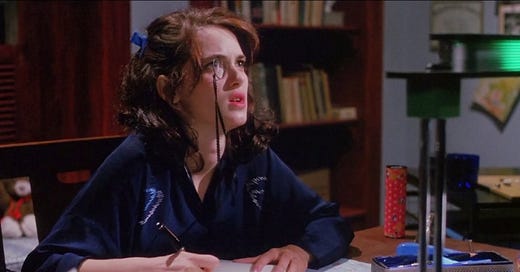


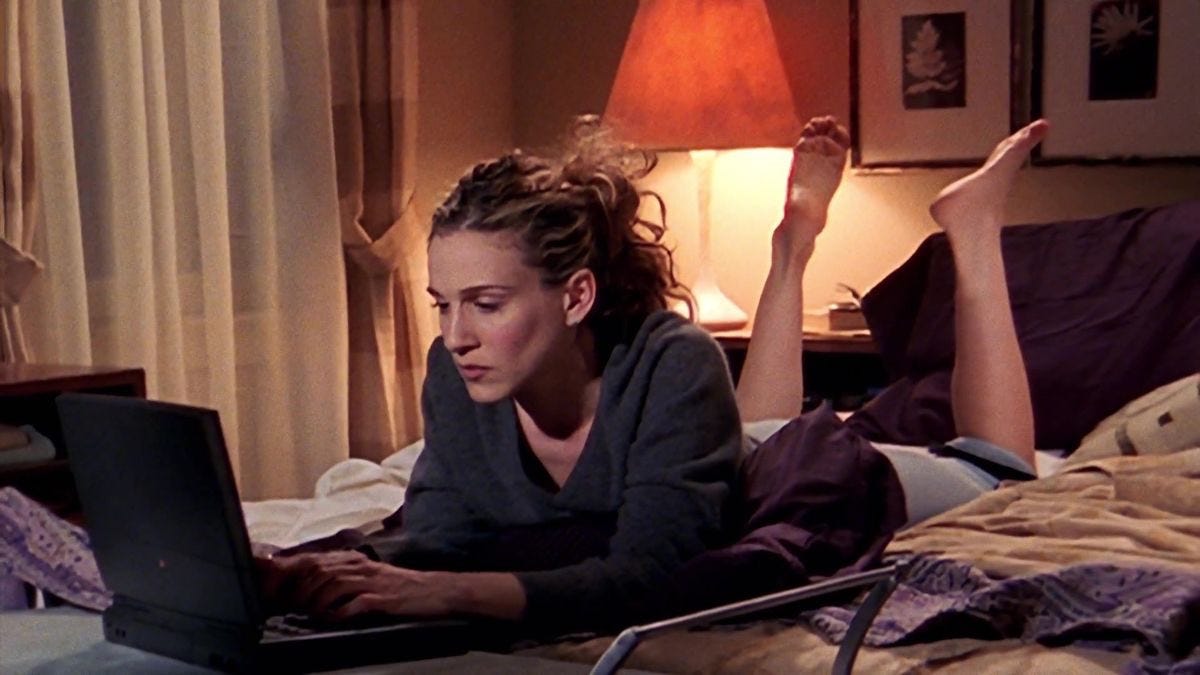
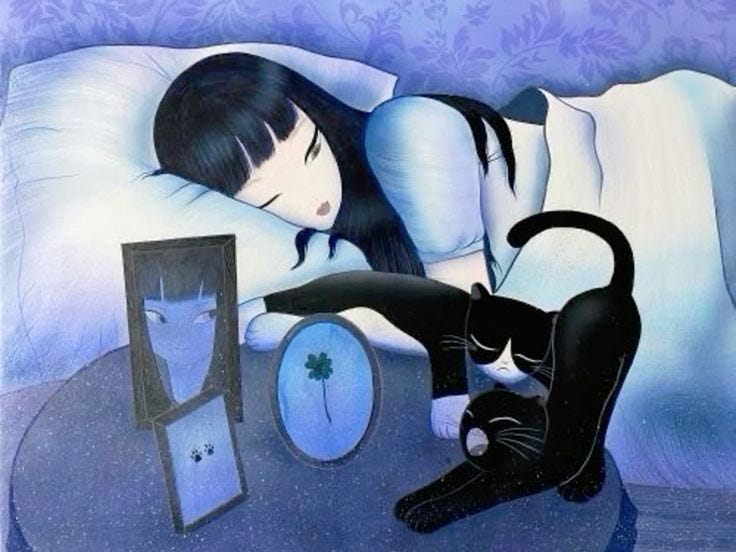

Thank you for chatting Arden, this was an excellent angle re: homogeneity on substack. So much of the sameness rn among fashion substacks feel like a repackaged version of the Christian girl autumn that’s theoretically just a joke now but swap the brown hats and plaid scarves for barn jackets and burgundy bags and it’s like hmm her spirit is very much alive lol.
thank you for writing this and pulling these perspectives together. i think about this a lot, especially with the trend on substack notes that’s like “my target market is X,” surprisingly no one mentions race. i actually don’t know if substack has yet develop racial “safe” havens the same way twitter has (ie. black twitter) for folks to find community in and have a shared lexicon / writing style / dialect and dialogue but i do see a different in metrics when i write about an experience that lives outside of the prevailing US cultural identity (im a black guy from canada who lives in NY) vs something that maybe a white woman would find interesting. it’s also not lost on me that 3 out of the top 5 performing essays ive written have featured white women on the cover photos. i don’t think this is a bad thing — this is just information. i think the way forward is to keep writing ourselves and, with it, our identities into existence and hope the the right audience will find it. white women and beyond. im unclear if we can simply rely on the substack algo to diversify the readership which is why recommends and reader sharing is so vital. 🫶🏿